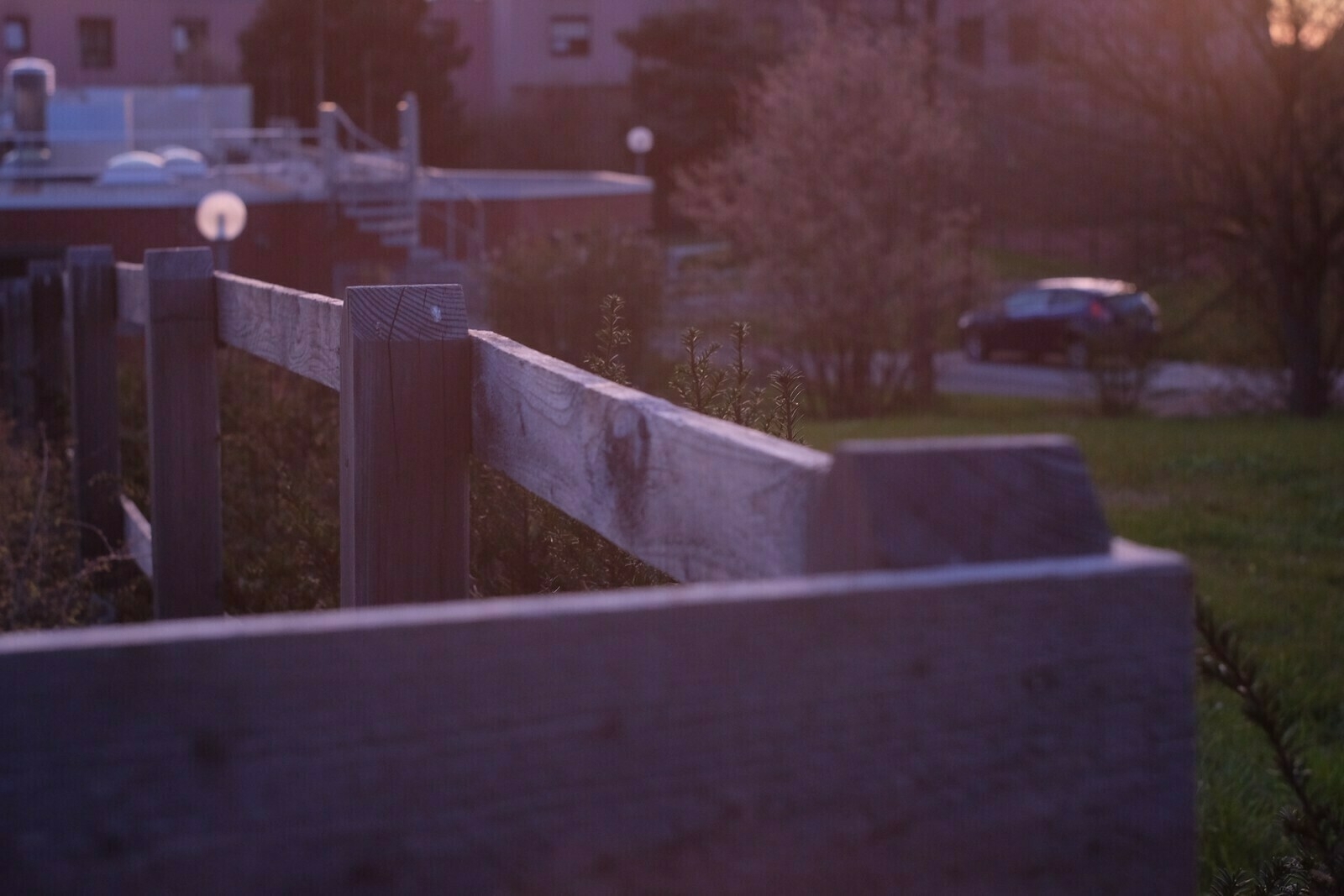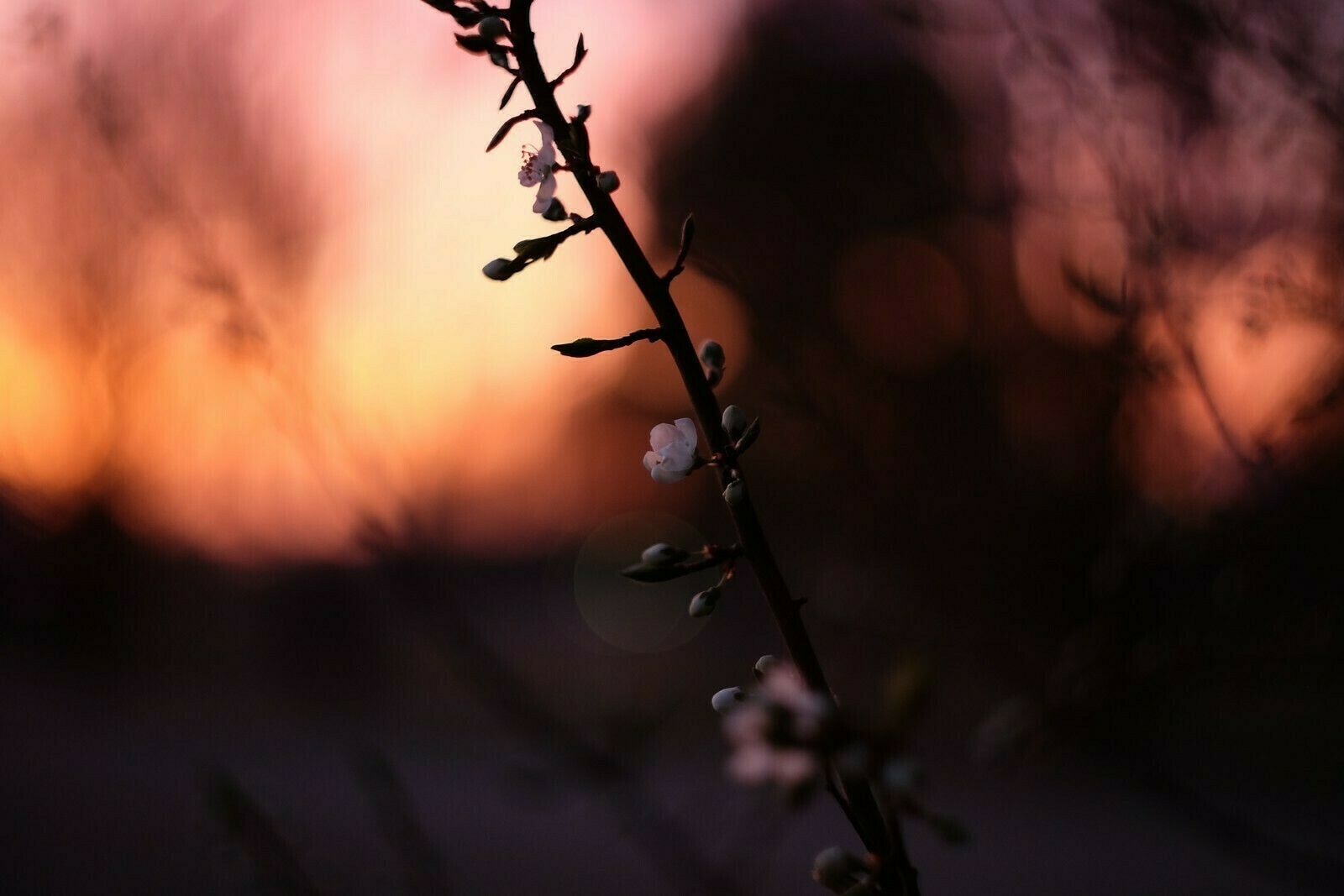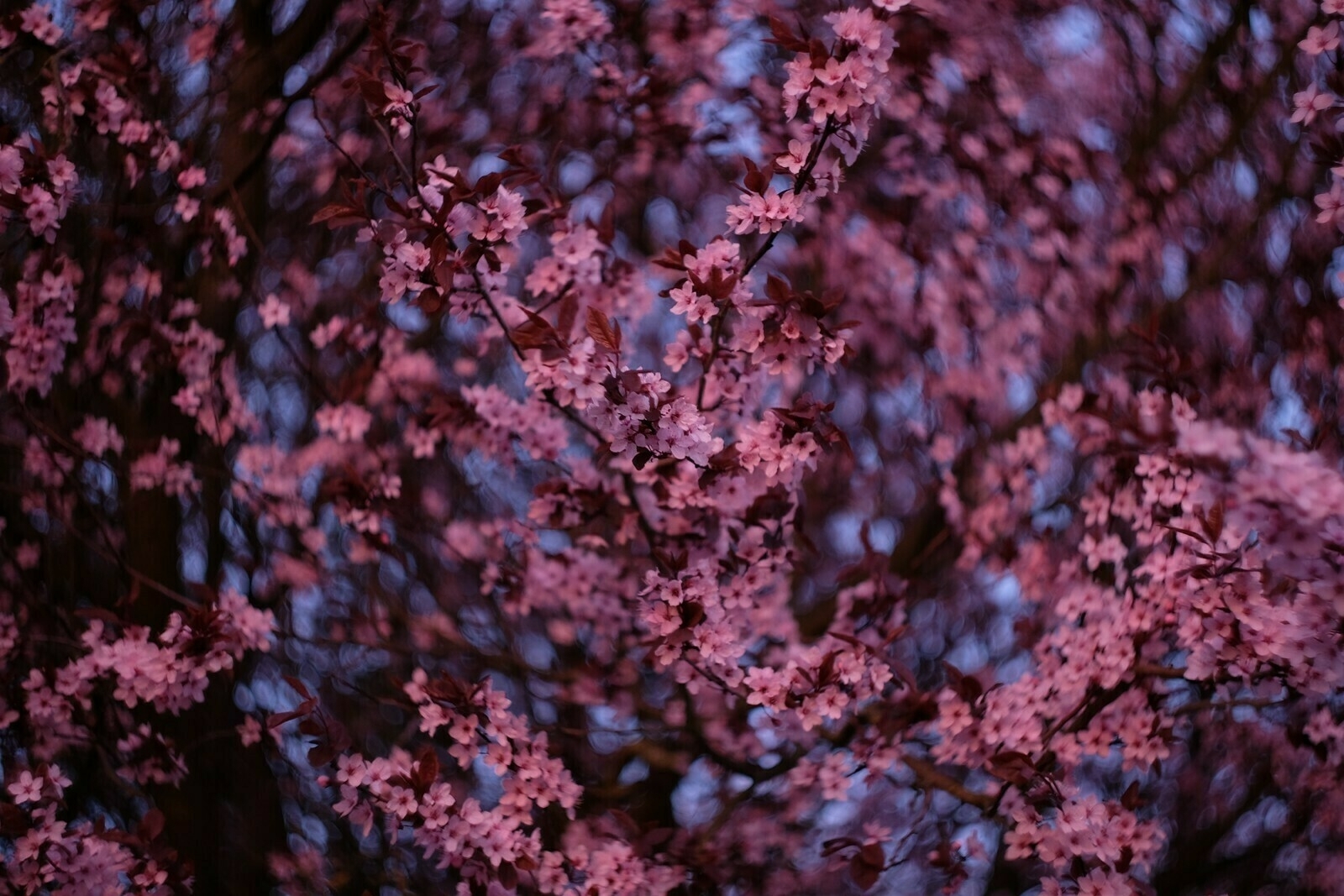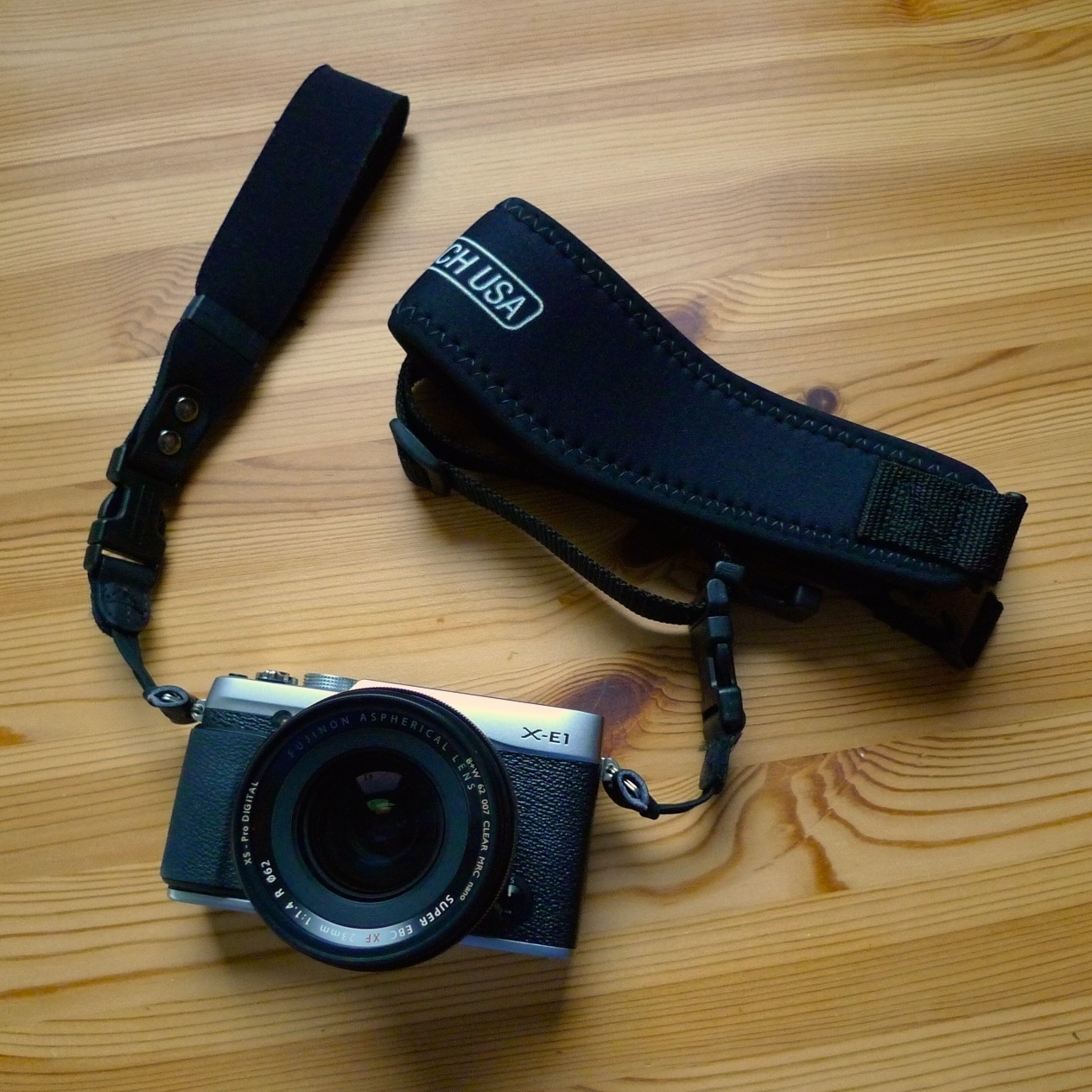Two great tastes that taste great together.
When I bought the Goruck GR0, I wanted a sturdy daypack with enough space for a (1, 2, 3) day trip. I figured that I would use it to carry my Fujifilm X-E1 as well, but didn't give much thought to how the camera would rest in the backpack. My solution for carrying the X-E1 in the GR0 looked like this:
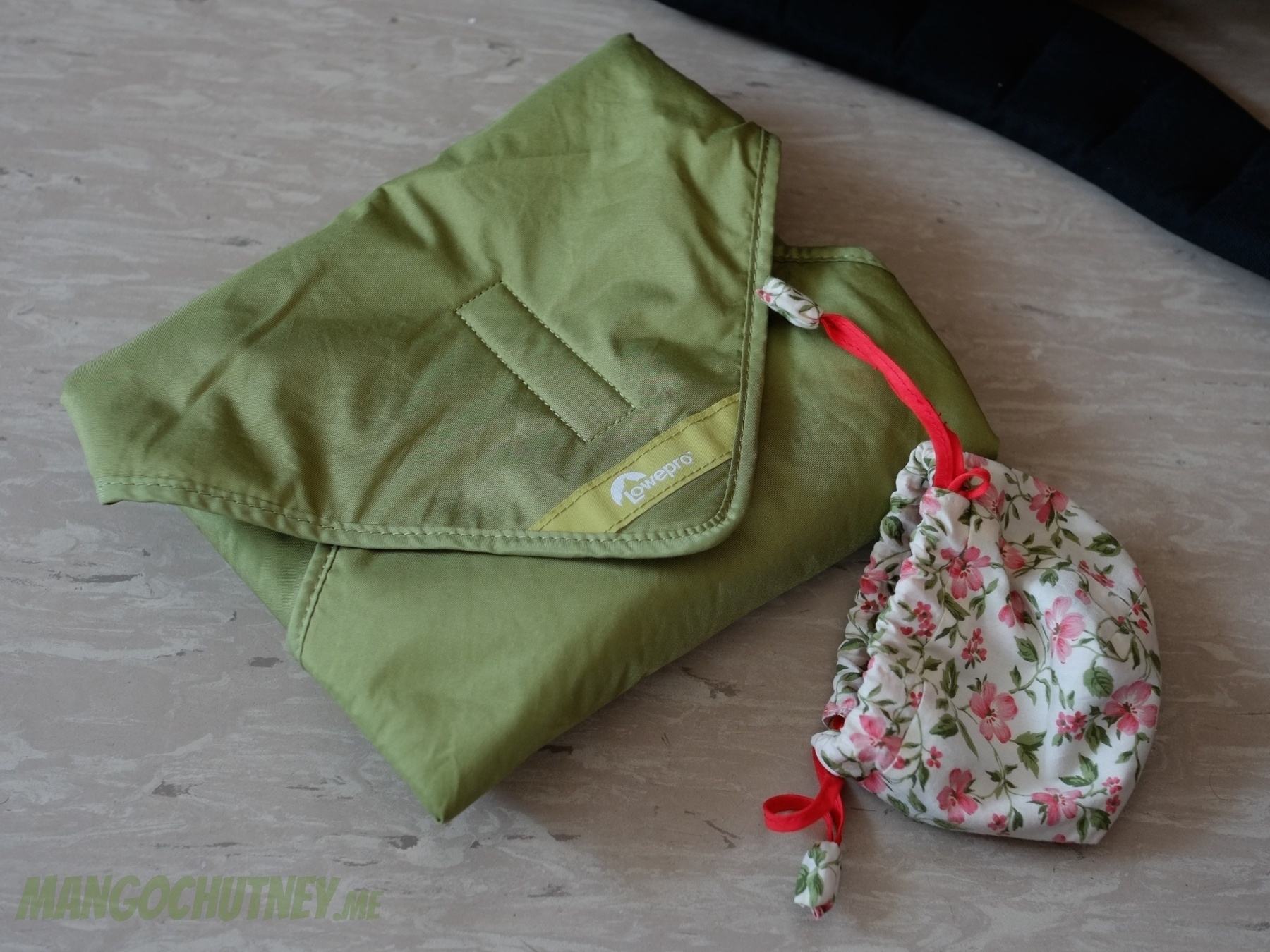
A cushioned LowePro wrapping cloth and a simple cotton string pouch for the batteries, SD cards and a few other small items. This was bad for several reasons, but the most annoying one was my gear shifting positions in the backpack, forcing me to hunt for it when I wanted to retreive the camera or a fresh battery.
I started looking for a different solution and stumbled across great ideas like using the insert from a Bilingham Hadley Pro inside the GR0, as shown by Jon Adair. Three things stopped me from going this route:
- The insert for Billingham Hadley Pro is quite expensive in Europe/Germany, costing around € 80.-
- The insert would rest at the bottom of the pack, making efficient packing a bit harder when carrying more than the camera gear alone and potentially preventing quick access, too.
- The Hadley Pro insert is of little use outside my GR0.
I kept looking, trying out a few other camera pouches and inserts, like Crumpler's Banana Bowl and solutions by LowePro and less well-known companies. The issues I had with the Banana Bowl were pretty much paradigmatic for all the other products I found and/or tried:
- They were either to small with < 3.5 l or too big with > 5.5 l in volume and the outer measurements would've made it difficult to place them in the GR0.
- The materials used weren't particularly desirable (like the neoprene on the Banana Bowls).
- Very few had grips or attachment points for straps to use them as small camera bags outside the GR0.
- There was no way to easily fix these camera inserts in place in the GR0.
I had almost given up and started thinking about ways to modify a Goruck GR2 Field Pocket as a camera bag insert and even considered making my own padded Cordura 500 den, MOLLE webbing-equipped insert (I'm not completely inept with fabrics and a sewing machine).
Then I stumbled across a company called f-stop and their Micro Small ICU (Internal Camera Unit). This company was entirely unknown to me but apparently they make really good gear, as reviews like this one show. Scouring their site for measurements and volumes (because the above insert was still a bit too big for my needs) I found the Harney Pouch.
The dimensions (W × H × D) are 28 cm × 18 cm × 10 cm (11" × 7.1" × 3.9") with a volume of about 5 l.
It was a perfect fit for the GR0 (11.5" × 17.5" × 5.5") or in fact any GR-series bag, because all of them are about 11.5" wide.
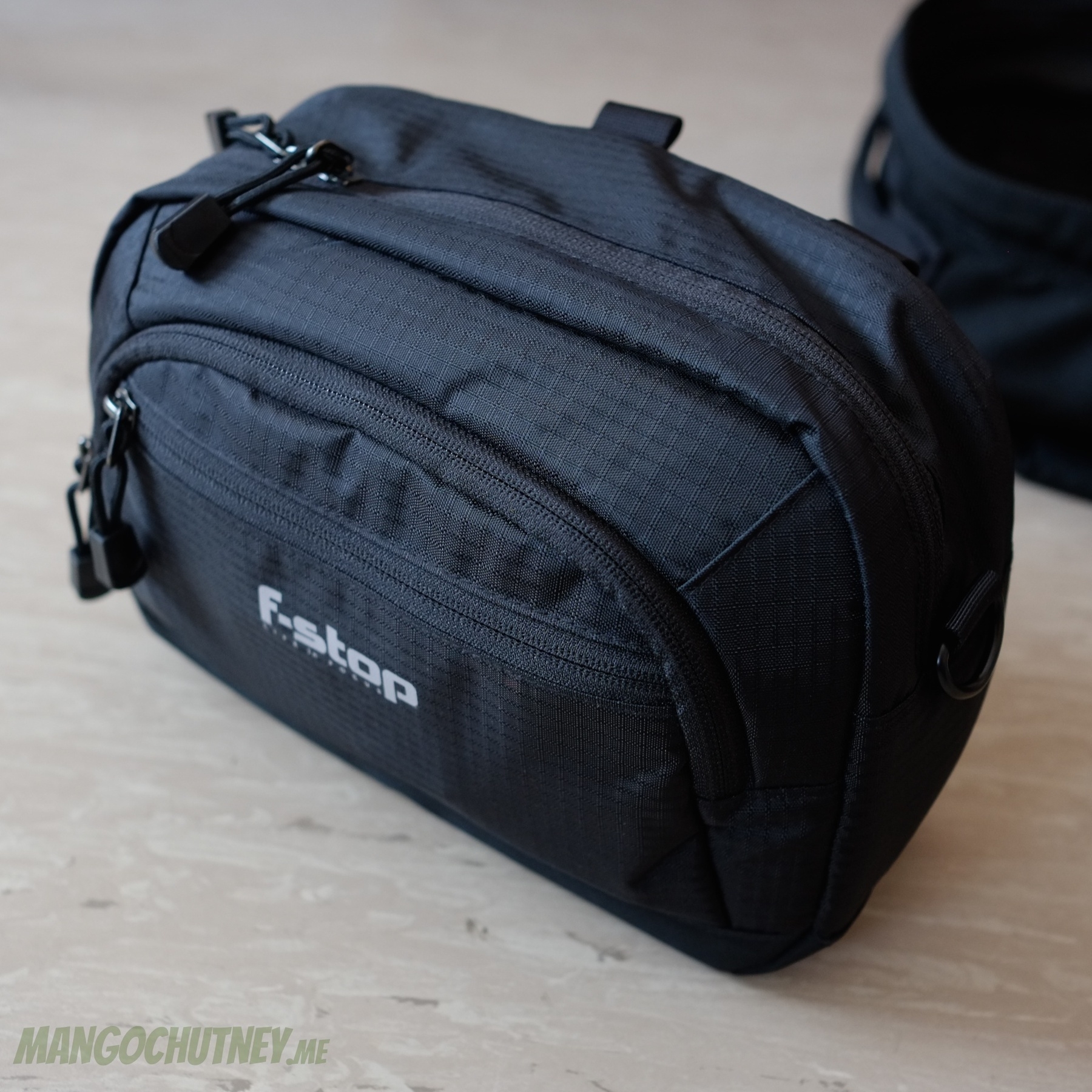
The Harney Pouch's outer fabric is 330 den Double Ripstop Nylon, it has a foam-cushioned and customisable main compartment, and two smaller and flatter compartments on the front (for less bulky accessories like batteries, memory cards, lens caps, and straps). It also comes with a light and comfortable shoulder strap, enabling use as a standalone bag. The bottom is reinforced and coated with a non-slip rubber.
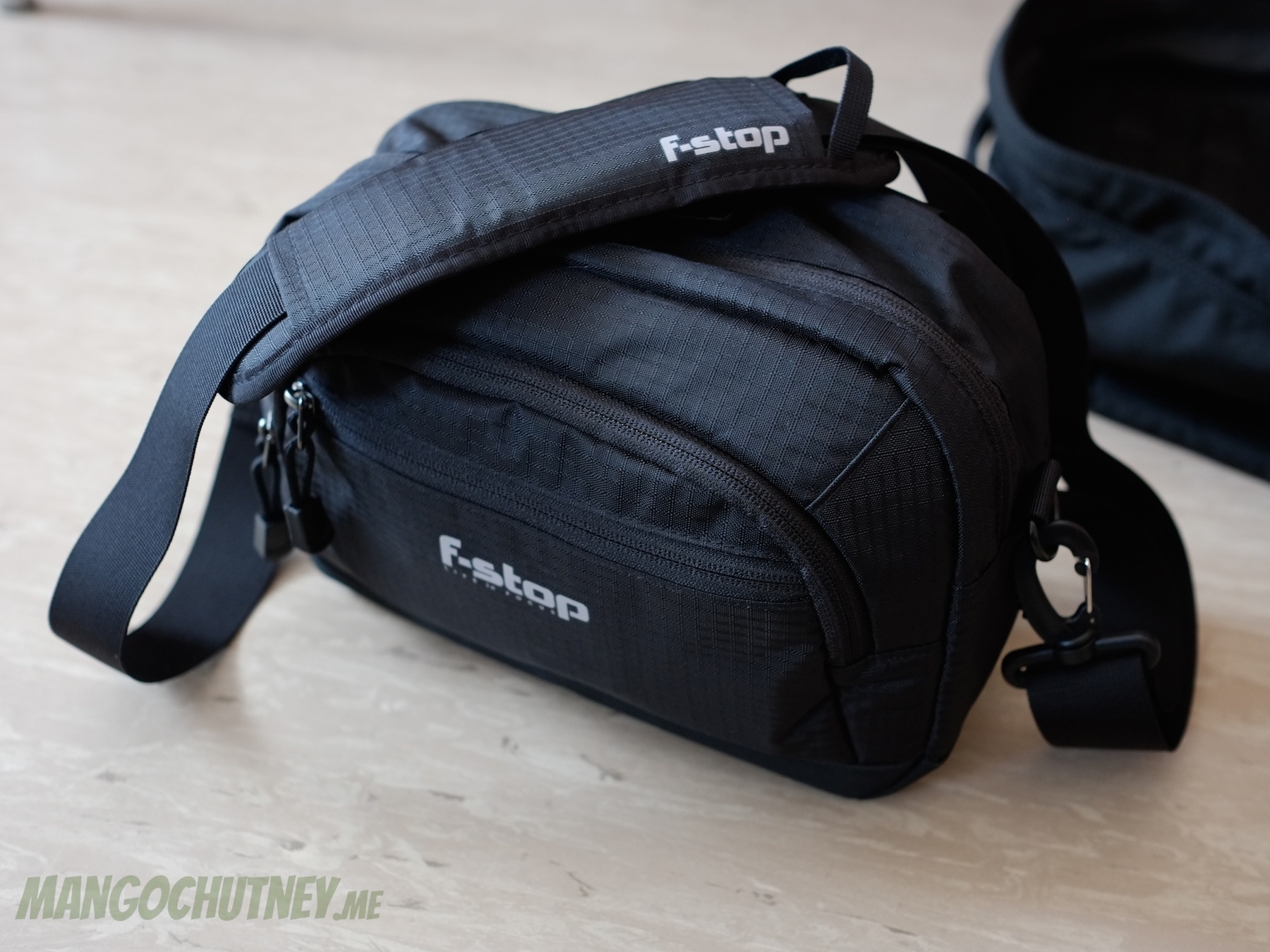
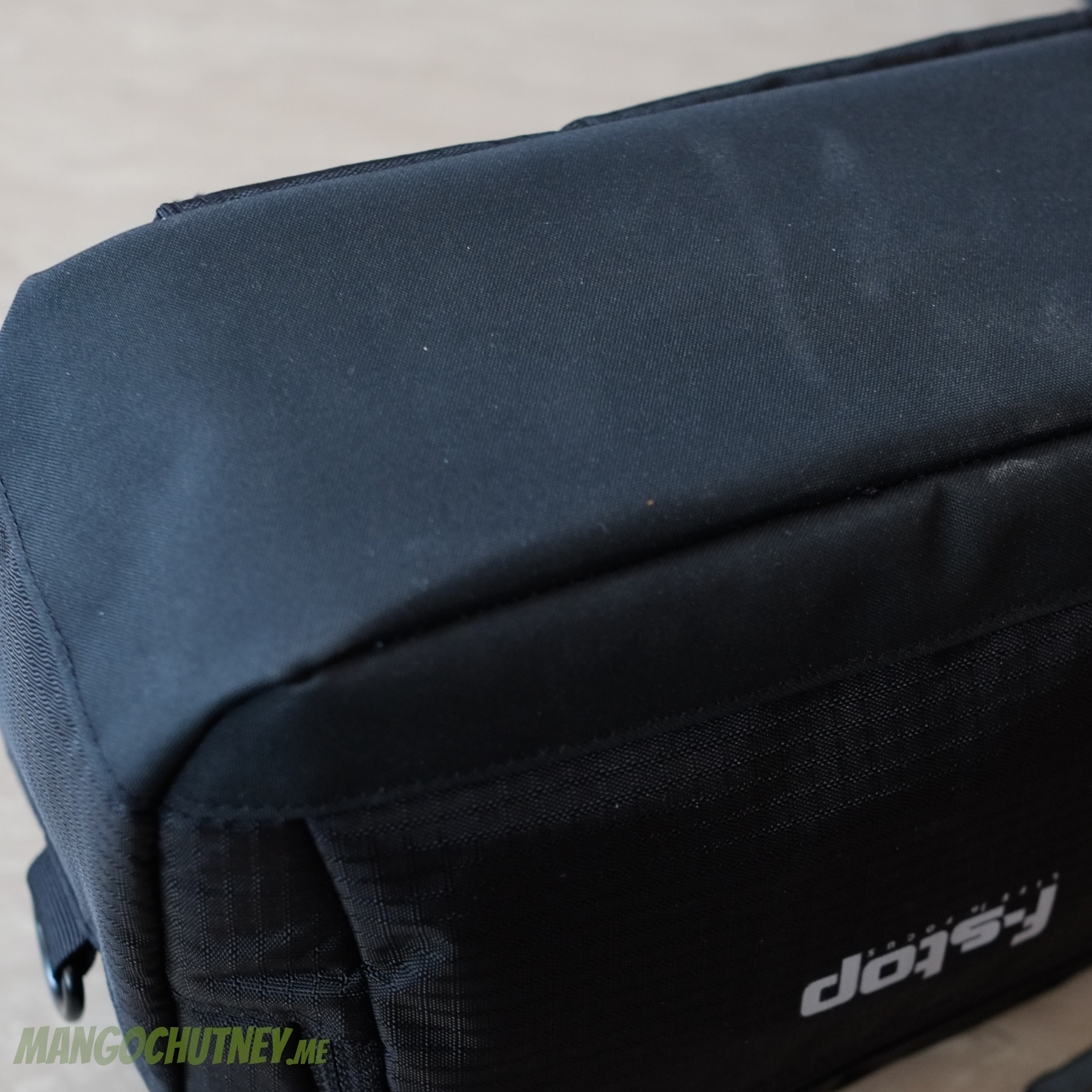
The real kicker however is the backside of the pouch. Originally meant as an accessory to one of f-stops other carrying systems, it has straps on the back that are compatible with MOLLE webbing:
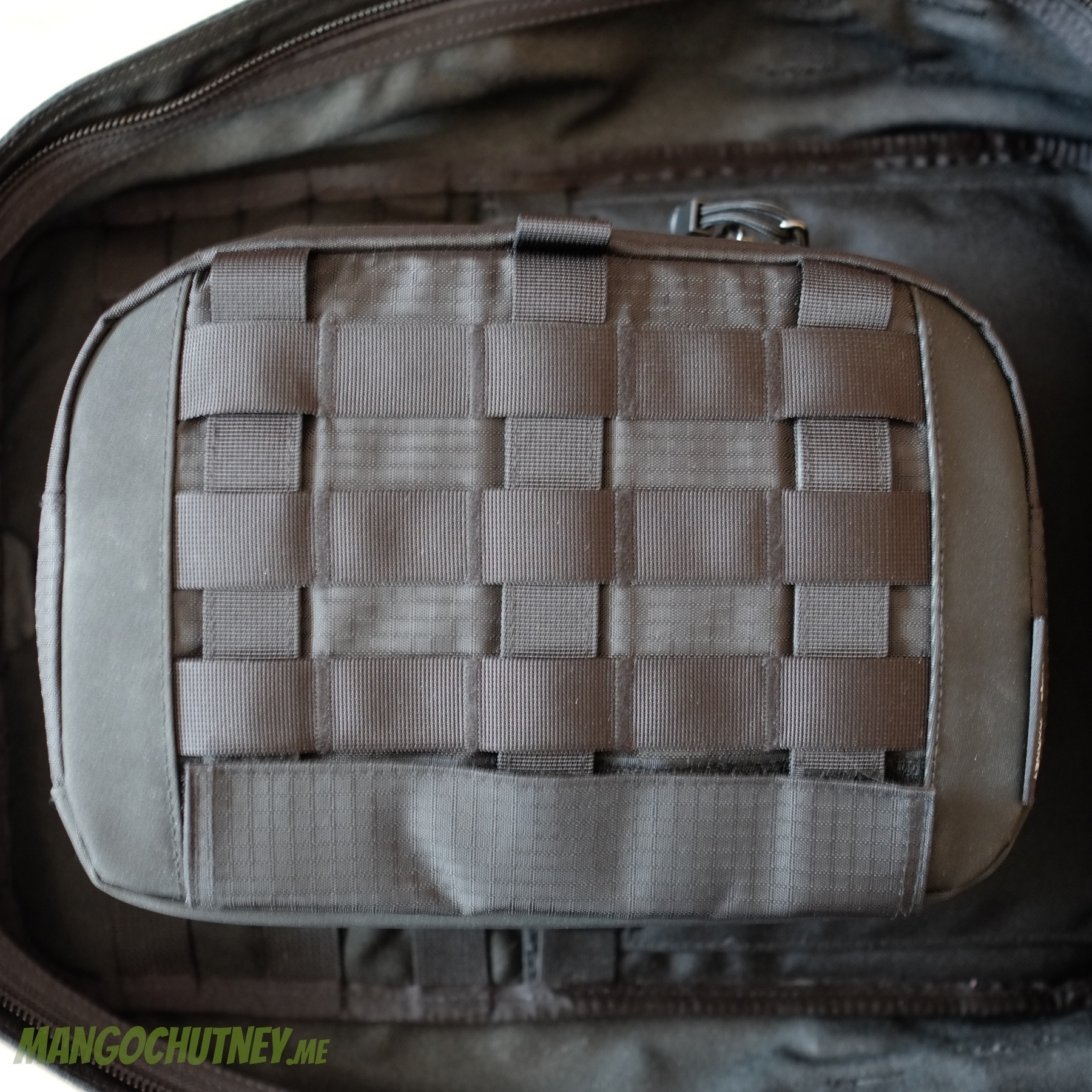

It fits the GR0's internal MOLLE webbing almost perfectly. There are only two things to observe when attaching it to the GR0:
- The middle vertical strap on the Harney Pouch can't be used (it's not really a MOLLE solution), and
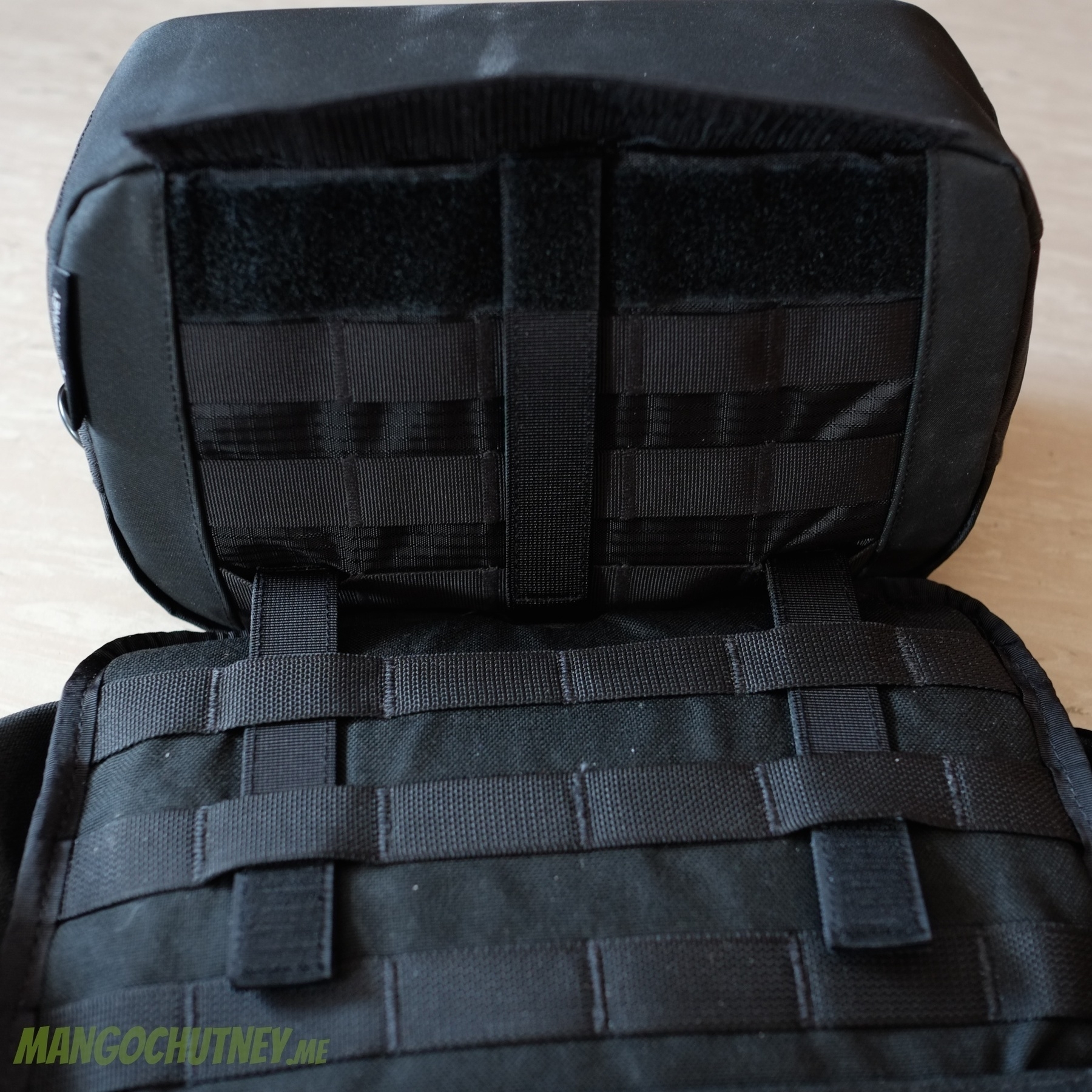
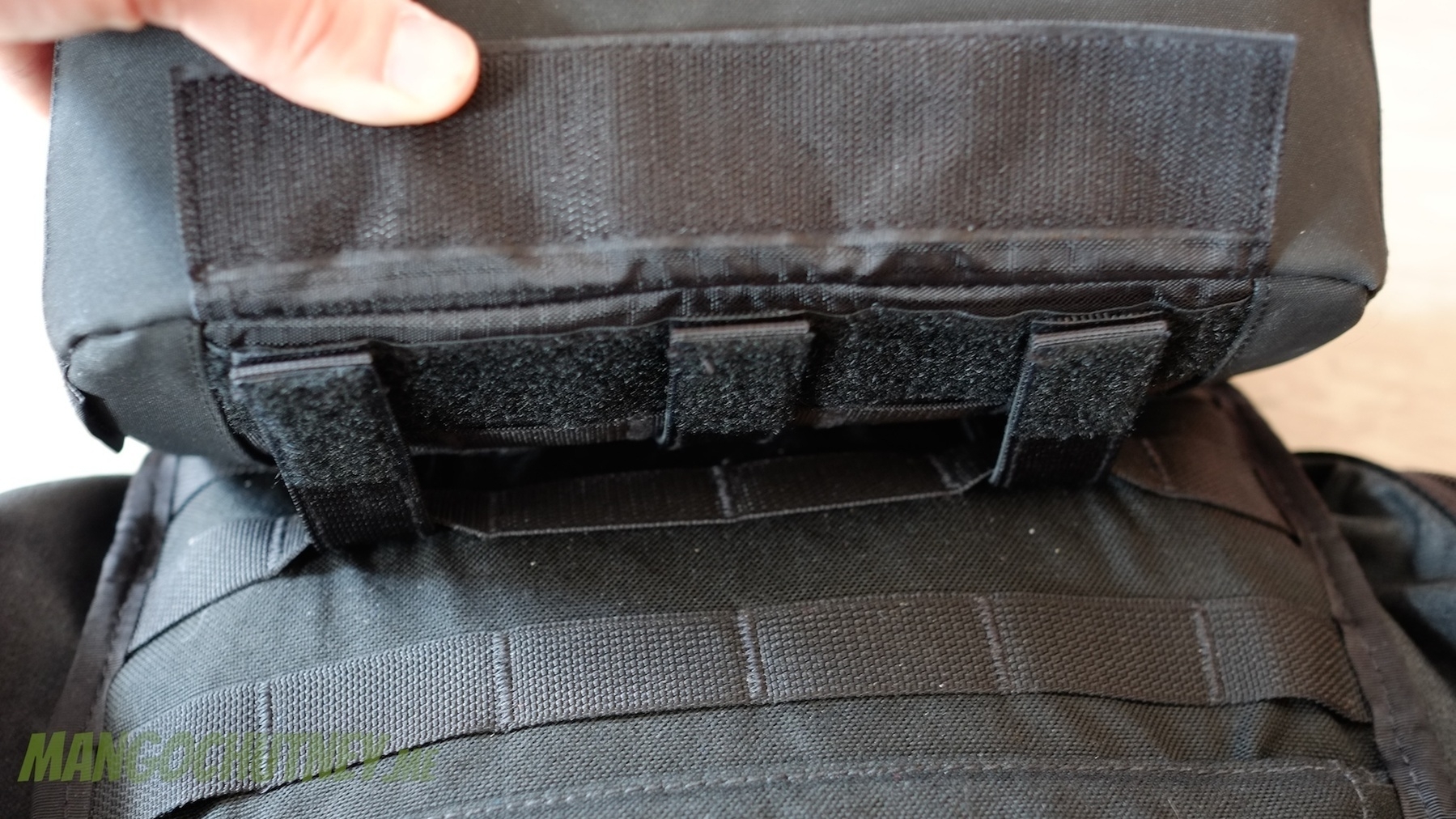
- for the best possible fit, the vertical strap should be pulled through the topmost horizontal row of webbing on the Harney Pouch first and then through the topmost horizontal row of the GR0's internal webbing. Like this:
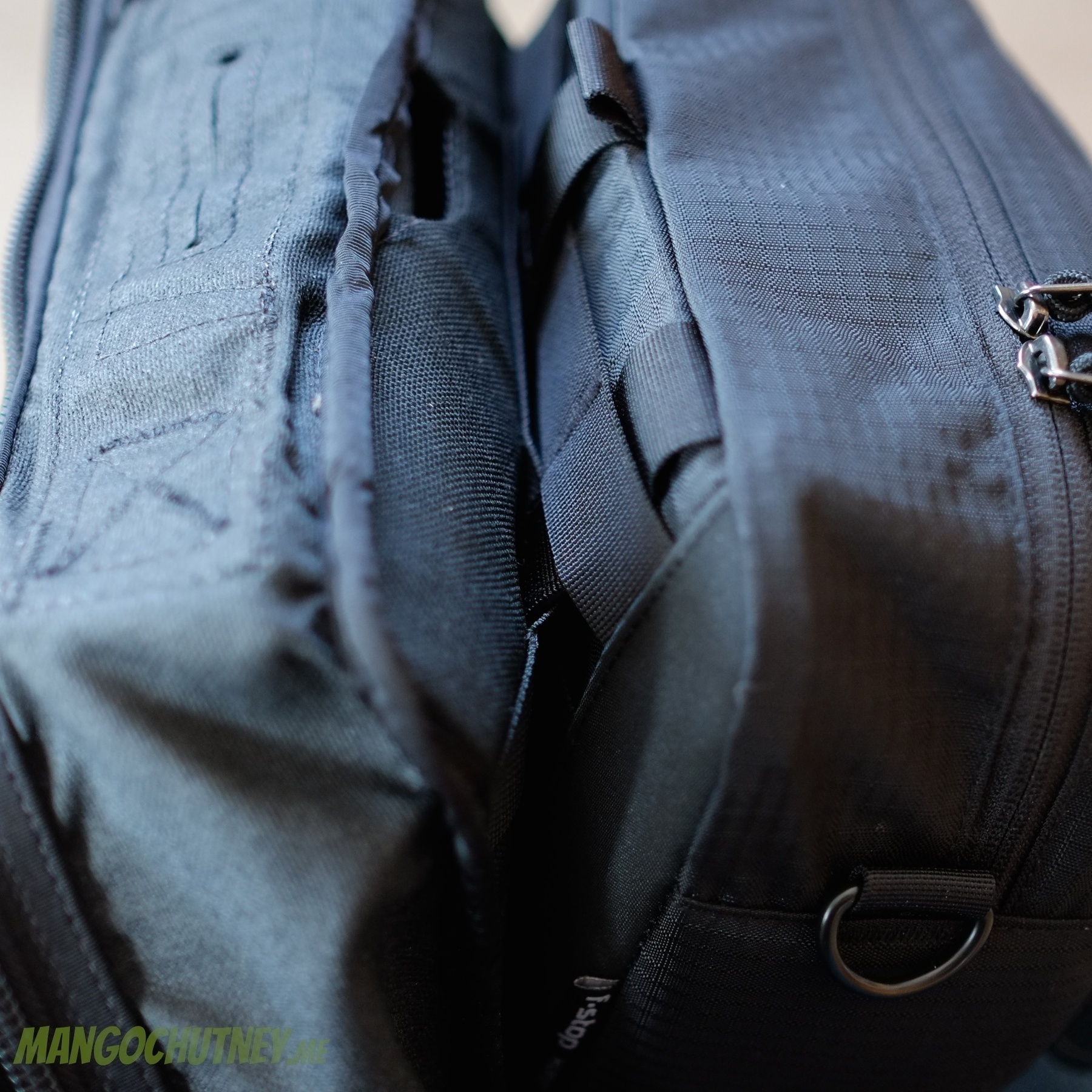
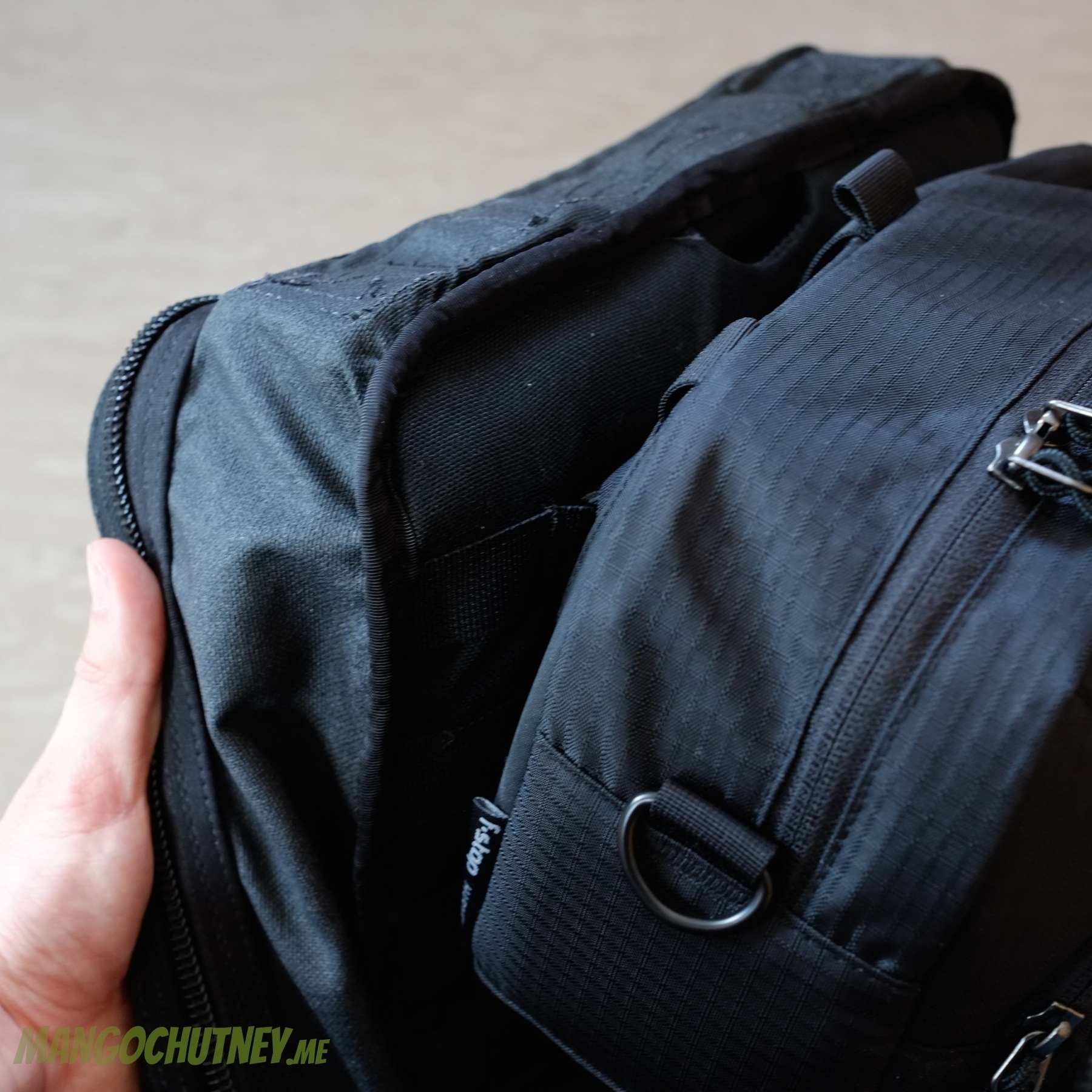
Attaching the Harney Pouch the regular way (by pulling the vertical straps through the GR0's topmost horizontal row first) will result in gap at the top of the pack, which can't really be utilised.
The method described above places the Harney Pouch perfectly at the top of the Goruck, making it very easily accessible while not wasting any space.
Size-wise the Harney Pouch really hits a sweet spot for me. I'm a photography beginner and don't have much gear — I also don't plan to build up a massive arsenal of lenses and cameras. Here's what's inside the Harney Pouch:
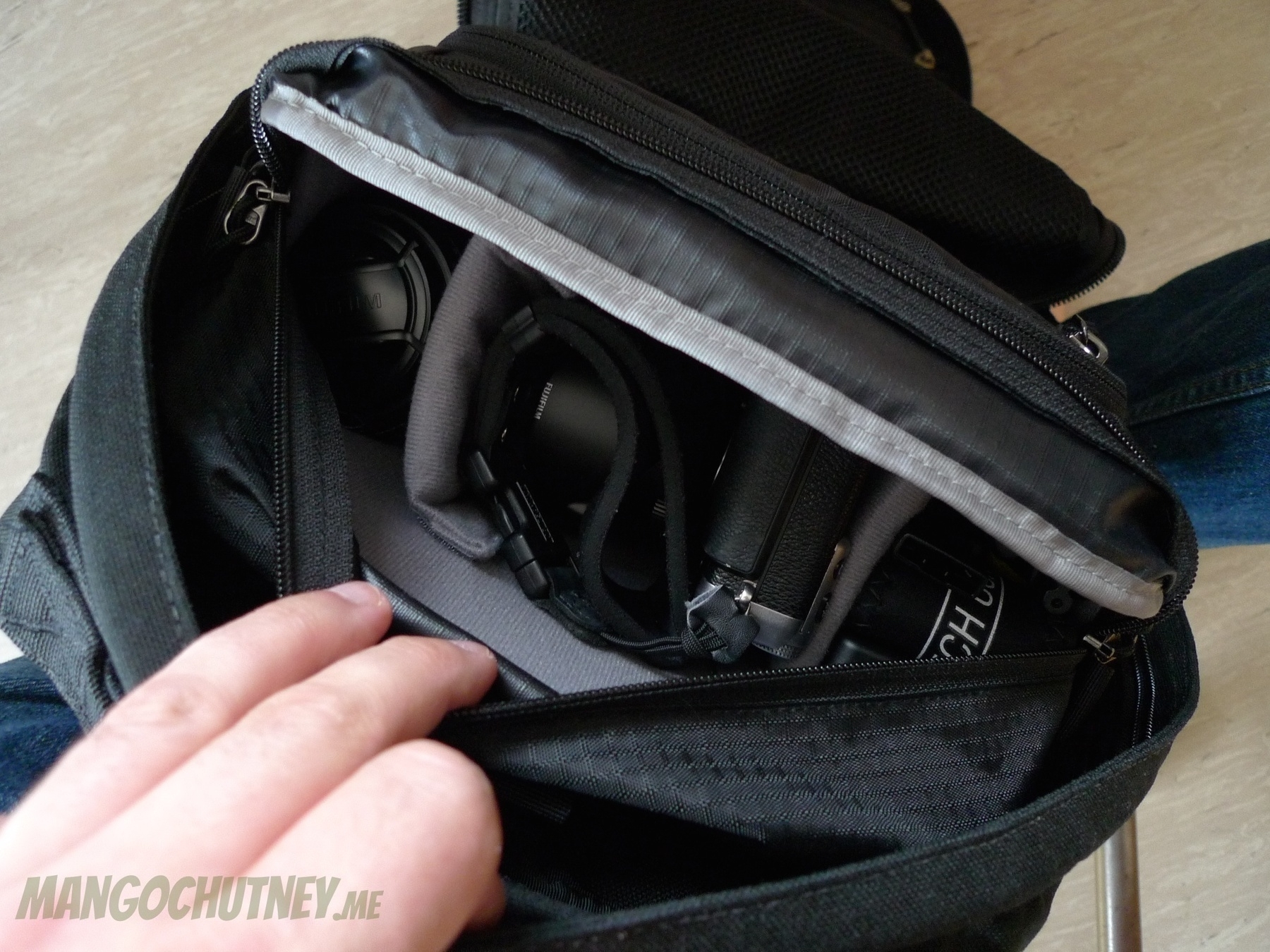
To the left there's the Fujifilm Fujinon XF 18-55mm F2.8-4 R LM OIS with the lens hood. The X-E1 rests in the middle, with the XF 23mm F1.4 R including the lens hood and an OP/TECH 'SLR Wrist Strap' attached. On the right there's the shoulder pad of my OP/TECH 'Utility Strap – Sling' (which I reviewed here), the charger for the X-E1's batteries and the charger cable.
In the frontmost compartment I store spare batteries and the memory cards and the middle compartment houses parts of the OP/TECH strap and some accessories for it as well as a spare lens cleaning cloth.
When I'm certain that I won't be using the camera during transit, I also store a rocket blower in the Harney Pouch.
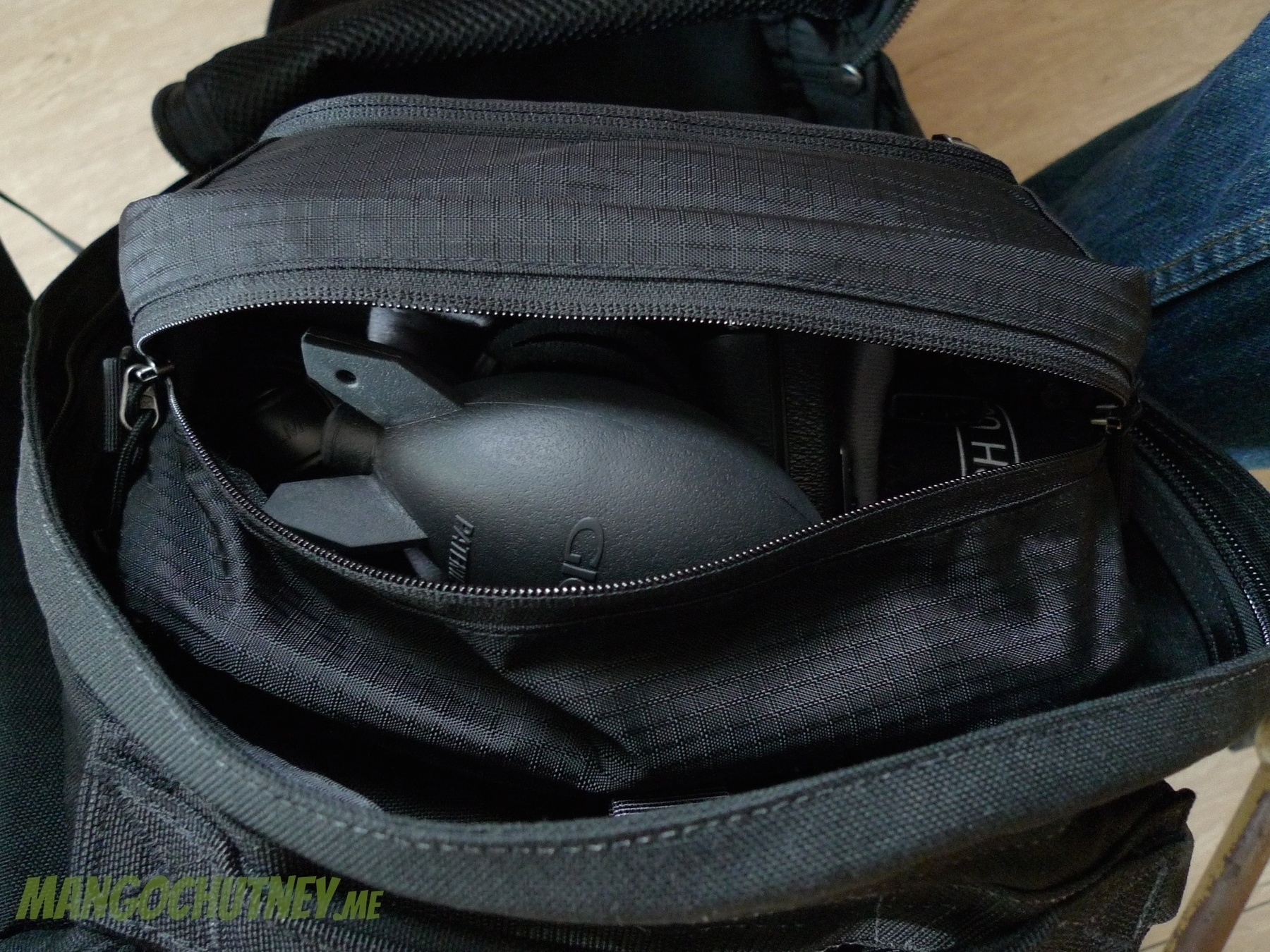
As far as I can tell, there's enough room in this camera bag to accomodate a mid-sized SLR with one additional lens or an even smaller mirrorless interchangeable lens camera (like the Sony Alpha 5000) with two additional lenses and some accessories.
When attached to the GR0, it effectively eats about 1/3 of the usuable volume (5 of 21 available litres). It also makes the ruck rather top-heavy, causing it to collapse into itself when not fully packed. However, this isn't necessarily much of an issue: when trying to retreive something from the Harney Pouch while out and about, I usually stand the GR0 up straight, leaning it against one of my legs, or hoist it over one shoulder in front of my chest.
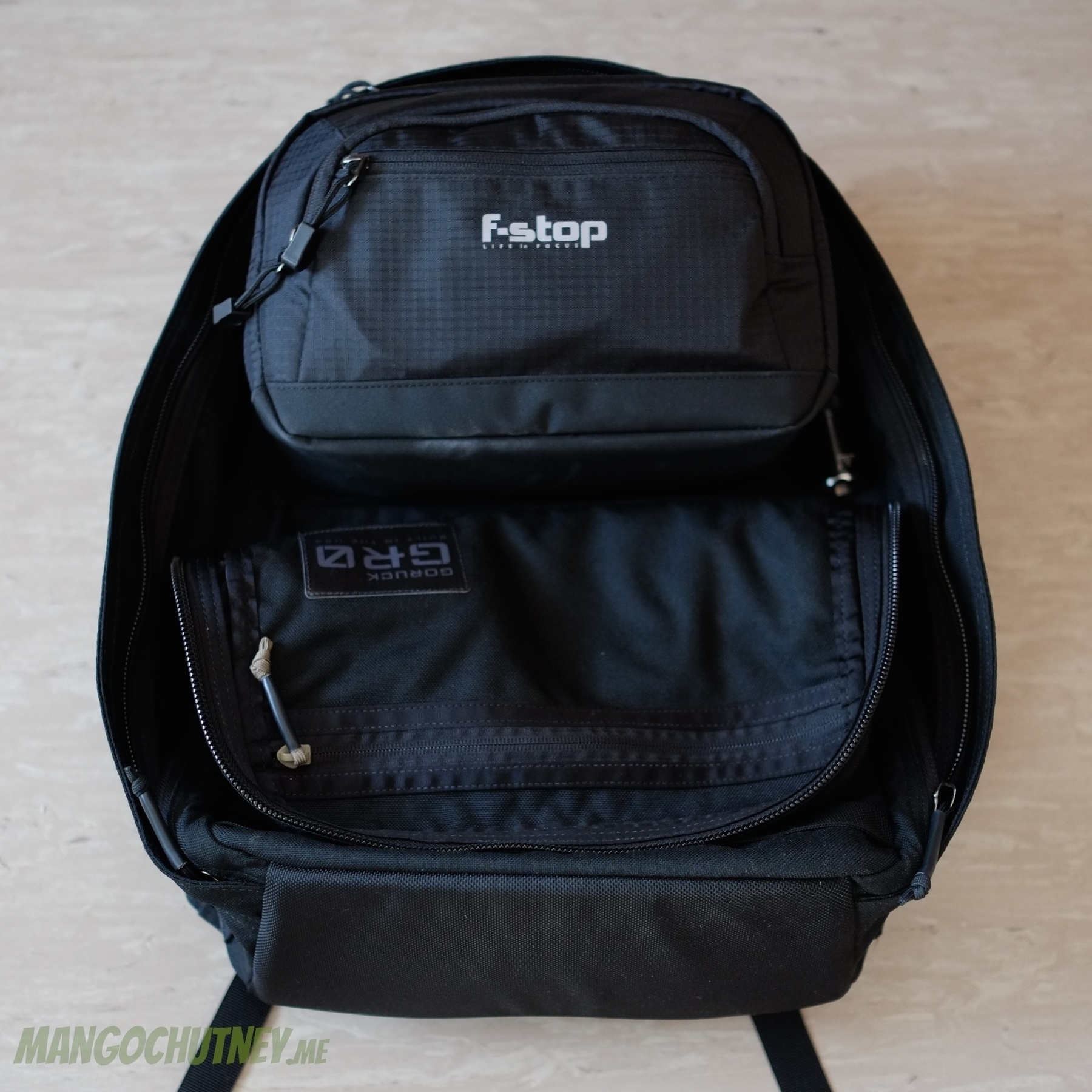
This is what the GR0 looks like when I'm going somewhere without my laptop:

For reference: Light waterproof jacket, 0.5 l stainless steel bottle, Tasmanian Tiger TacPouch (used as an organiser for smaller items), specs case for my sunglasses, and a specs case that I use for my earphones.
If I take the laptop with me, it's stored in the appropriate compartment in the back while its accessories and backup hard drive are organised in a medium-sized Cocoon Grid-It! organiser and stored in the main compartment. With all of the above already in the Goruck GR0, there's still enough space for some food and a light fleece sweater.
In larger Goruck backpacks the volume of the Harney Pouch will have a comparatively smaller impact on the available space of the backpack. And if I really need the internal space of the GR0, I can also attach the Harney Pouch to the outside of the GR0.
In conclusion I can say that it's hard to imagine a more fitting solution to carry my camera gear within the Goruck GR0 than the f-stop Harney Pouch. Inside the backpack it gives me quick access to my camera gear while staying out of the way when I pack my stuff. Outside the GR0 it is a sturdy, well-made, versatile, spacious (enough), and comfortable camera bag. Considering what it does, $ 75.- (I paid € 55.-) isn't too much to ask.
